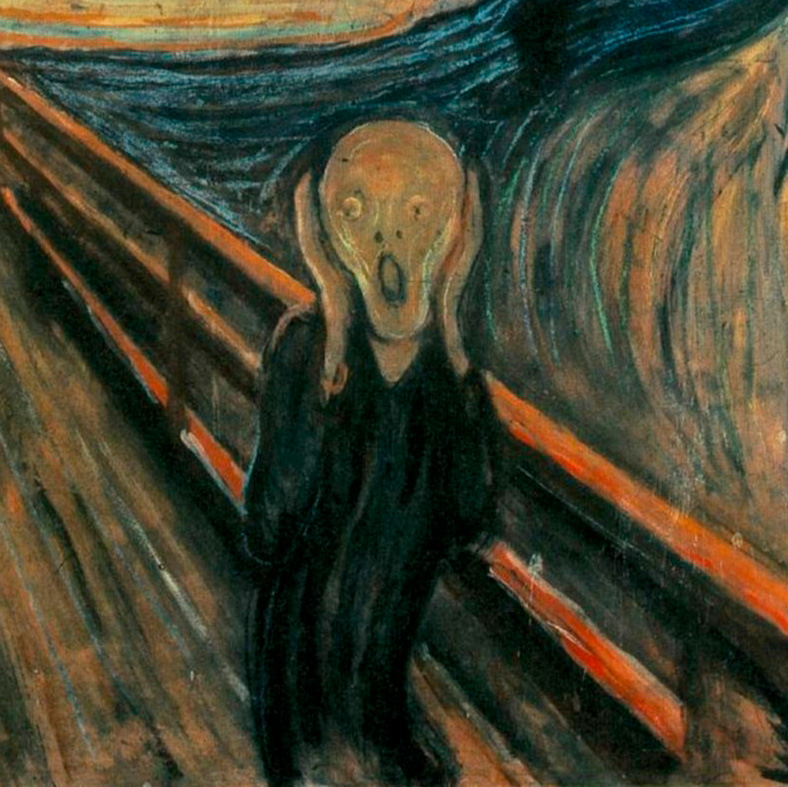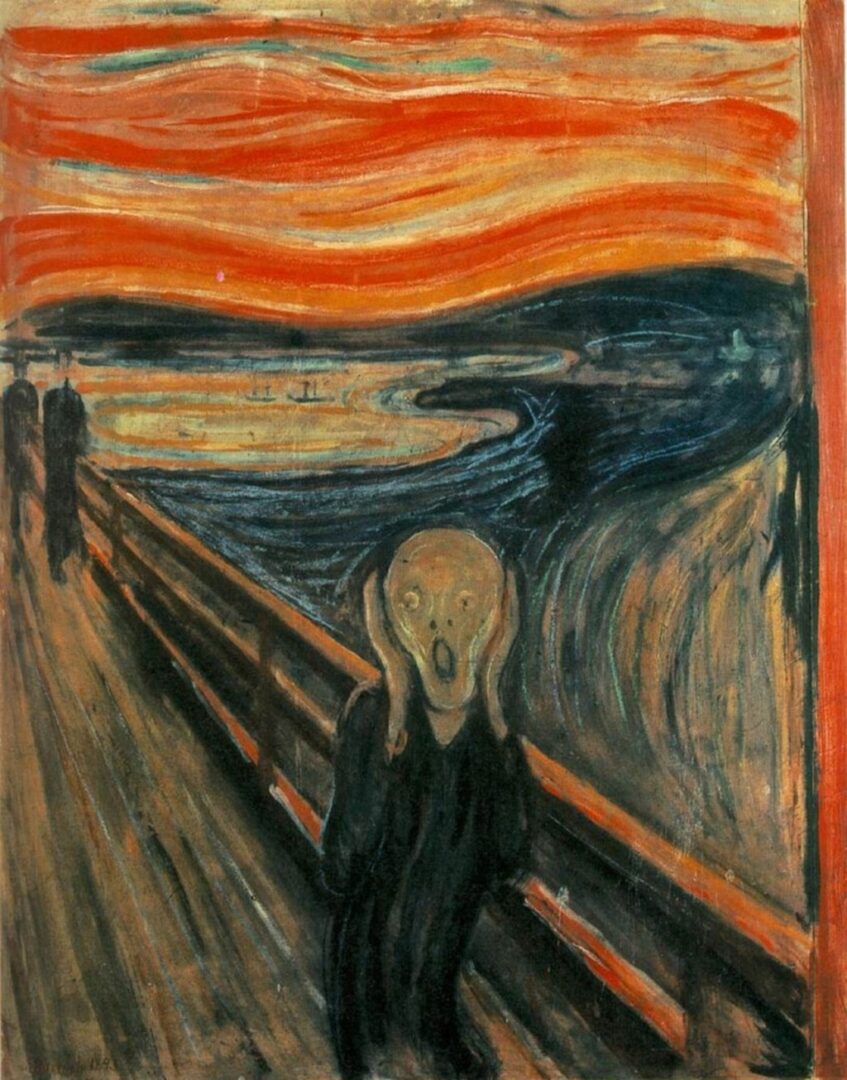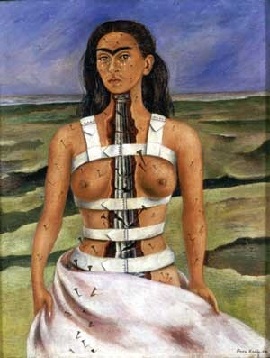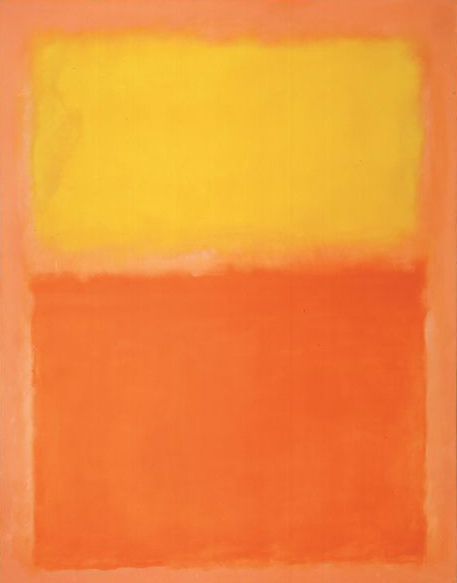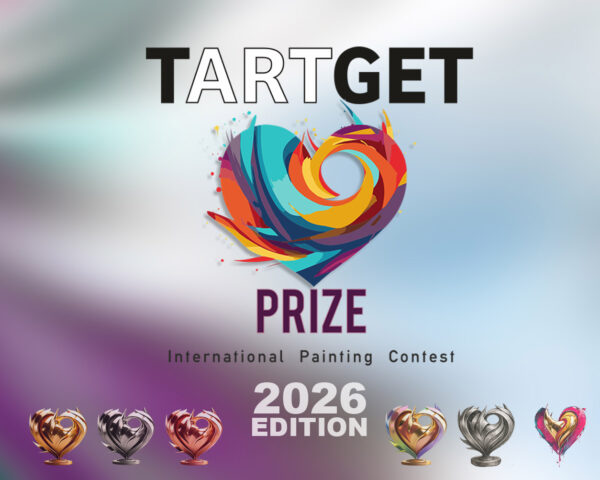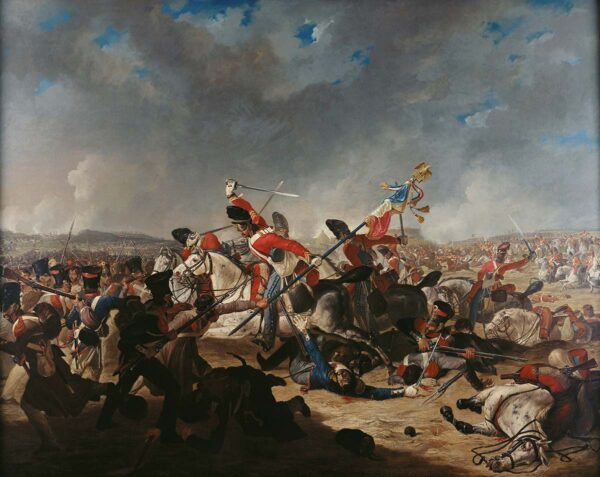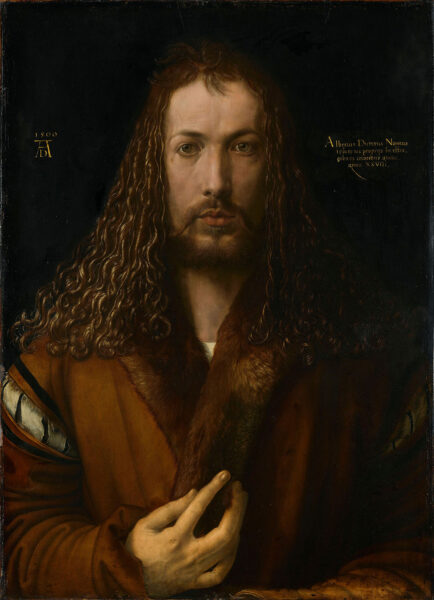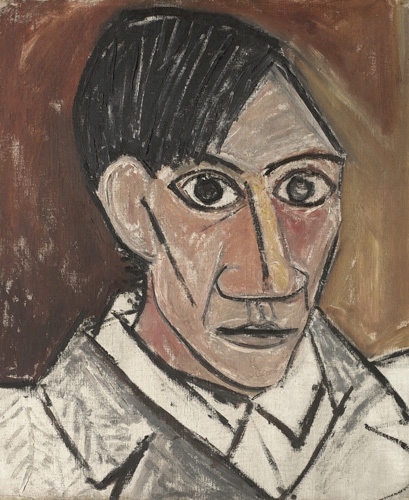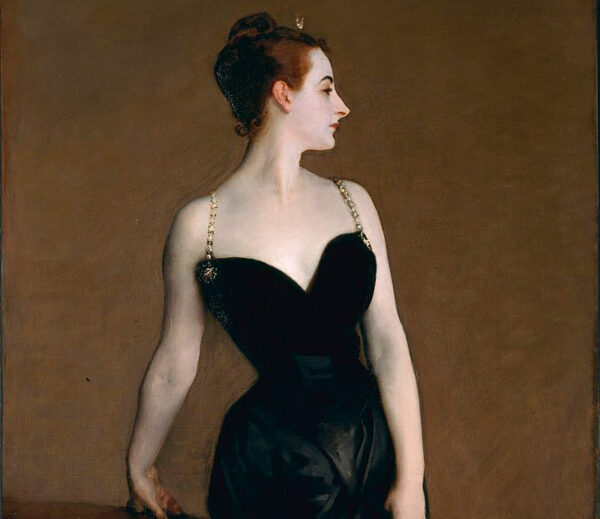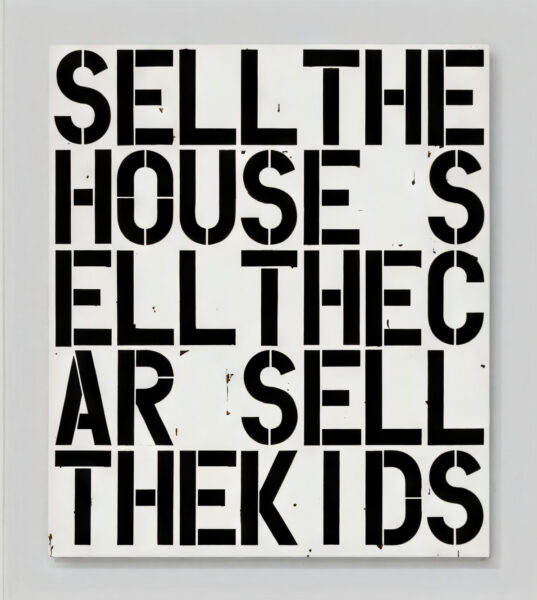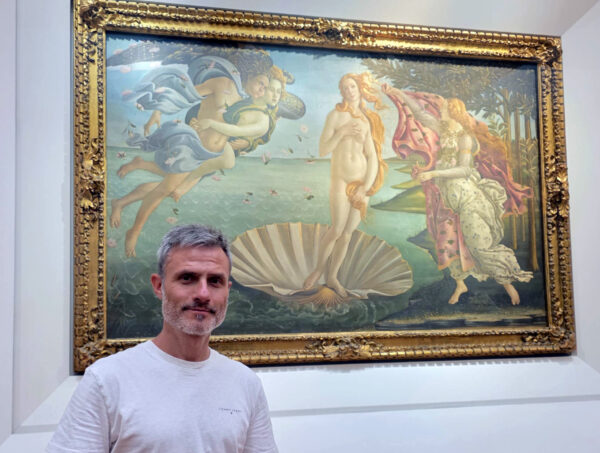A raw in soul
The history of art is full of broken souls who found an emotional prosthesis in the brush. This is no coincidence. Art doesn’t cure, but it keeps you company. It doesn’t heal, but it holds you up.
Every stroke is a confession. Every color, an emotion. The canvas becomes an intimate diary, a confessional without a priest, a mirror without judgment. Van Gogh didn’t paint sunflowers out of a love for botany, but because he longed for their light; lighthouses to calm his tormented soul. The person who screams in Edvard Munch’s painting, besides the sinister figure, is the Norwegian painter himself, screaming through him. Just as Frida sewed up the wounds that medicine couldn’t reach through her self-portraits.
Painting so as not to fall
Mark Rothko’s “Orange and Yellow” (1956) stands out for its rectangles of color with blurred edges on an enveloping background, inviting contemplation and emotional immersion. Rothko used this technique to evoke deep feelings of warmth, happiness, and hope, making the color seem to glow from within. The American genius of Latvian origin created truly intimate connections with the viewer.
Today, in a society that runs faster than it feels, mental health has become an urgent topic. And art, a silent refuge.
Art therapy is no longer an eccentricity of alternative centers. It has now been elevated to the status of a clinical tool. Art therapy is a valuable means of expression for those who cannot find words.
Painting liberates when it’s created. A simple scribble is the expulsion of pain. It doesn’t matter if it lacks technique or fails to make sense. In workshops at hospitals, prisons, schools, and health centers, fears are drawn, griefs are colored, and hopes are sketched. The line becomes a testimony. And the canvas, a mirror. There, where silence is heavy, color speaks. Where shame makes you small, the gesture expands. Art demands no explanations, only presence.
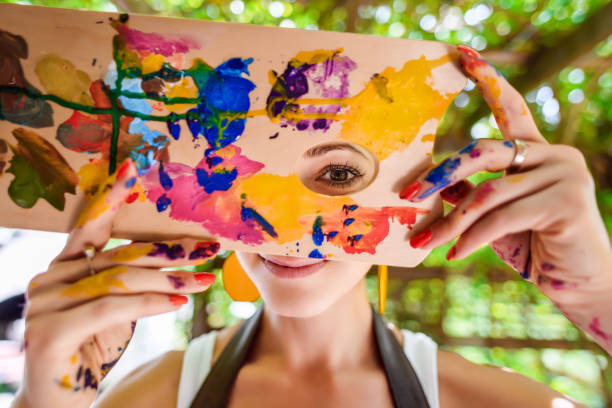


Artists Who Speak Clearly
Many contemporary creators no longer hide their internal battles. They exhibit, share, and transform them into their work. The Japanese artist Yayoi Kusama has turned her obsessions and hallucinations into a visual universe that both fascinates and challenges. Her art is more than just an escape; it confronts you. The Japanese artist creates infinite rooms that can be interpreted as a mind seeking order within chaos.
In Spain, figures like María Hesse and Paula Bonet have addressed topics such as anxiety, grief, and abortion with an intimate and courageous aesthetic. Their illustrations denounce, comfort, and accompany; their decorative function recedes into the background. In her series Rodents, Bonet writes and draws the daughter she lost. And in that gesture, she breaks the taboo, gives voice to the silence, and turns pain into a political act.

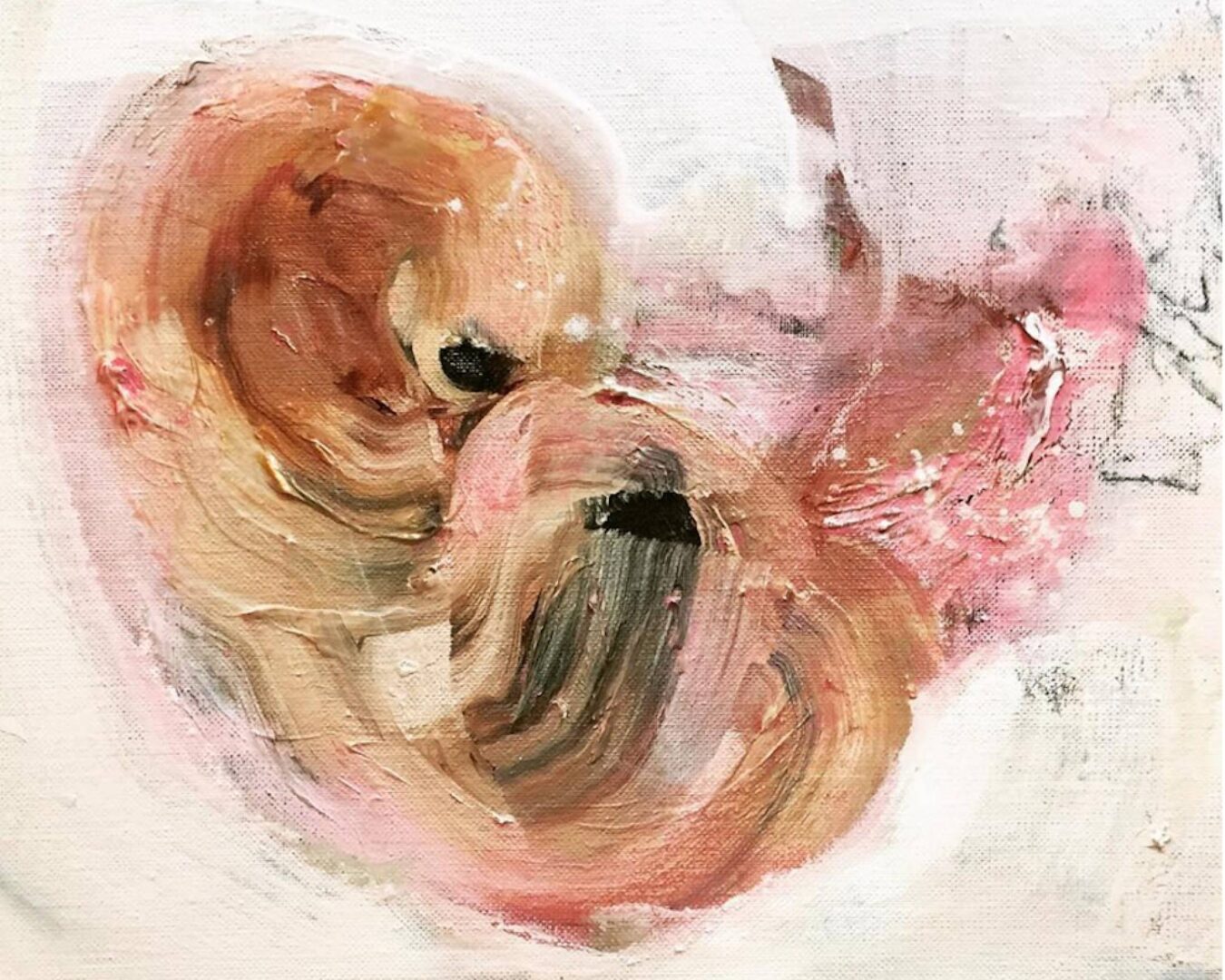
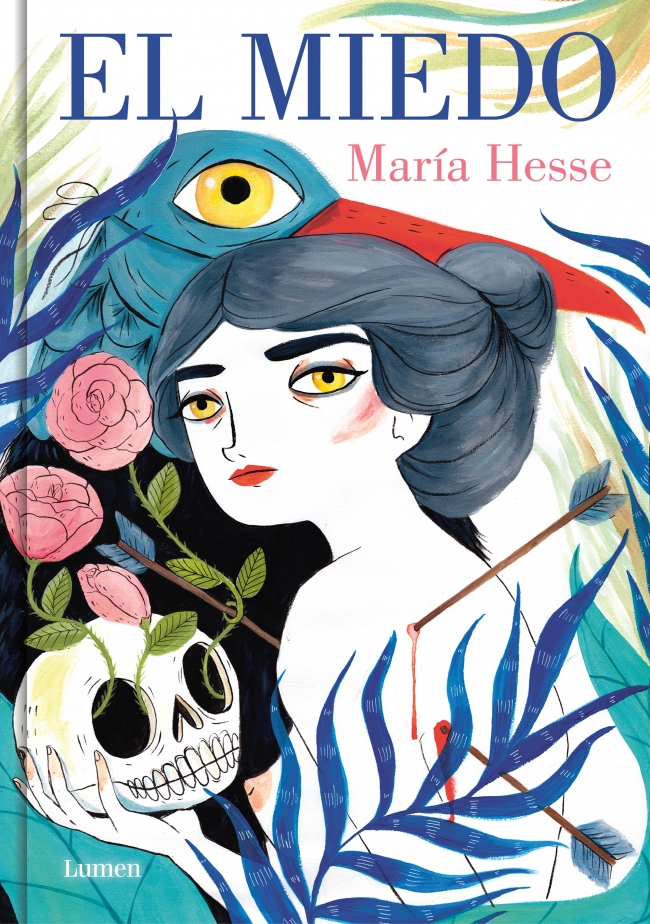
When Art Embraces Us
You don’t have to be an artist or even pretend to be one for a piece of work to save you a little from everyday troubles. The simple contemplation of a painting could be enough. The capacity of a painting to put you in communion with the feelings of a stranger you will never meet. The trembling brushstrokes might be your fear; the deep blue, your own sadness; just as the firm line is your hope.
Because art, when it’s honest, doesn’t judge. It just embraces. It reminds us that we are not alone. That fragility is shared. That beauty is not always symmetrical, or clean, or luminous. Sometimes, beauty is in the tearing. And in that tearing, we find comfort.

